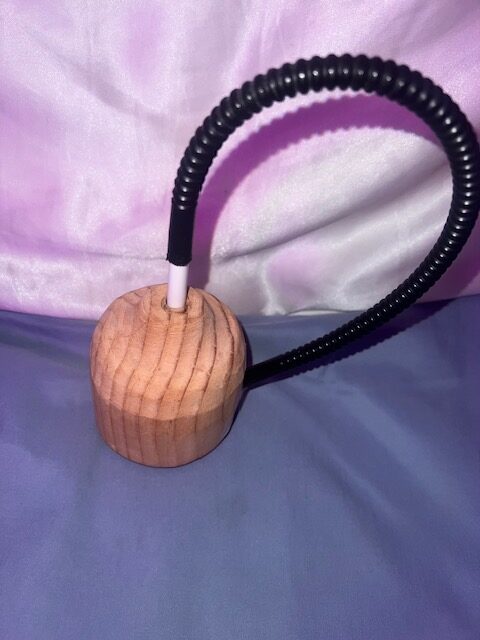
Math behind Klein Bottles
Klein Bottles were first founded by Felix Klein in 1870, as a display of an object that shouldn’t exist in our dimension.
https://en.wikipedia.org/wiki/Felix_Klein
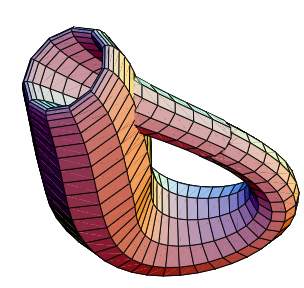
Klein bottles are made such that it is a non orientable surface of Euler characteristic 0.
For an object to have a Euler characteristic of 0 we must look at the Poincare formula that states X(g) = V-E+F, which is a generalization of the polyhedral function for a surface of genus g. In this formula V is the number of polyhedron vertices, E is the number of polyhedron edges, F is the number of faces.
The genus g roughly speaking is the number of holes in a surface, where a sphere has genus 0, and a torus has genus 1. This is because the Euler characteristic of any closed odd-dimensional manifold is also 0.
https://mathworld.wolfram.com/KleinBottle.html
The Klein bottle shouldn’t be able to exist in the three dimensional euclidean space, which is due to the Klein bottle having 2 manifolds which can only exist in a 4 dimensional space.
However, the model made was different from the original 4D structure, as in the 3D structure the shape touches itself as part of the shape is inside the rest, yet that doesn’t happen in the real 4D model.
A non orientable surface is one where there exists a closed path such that the directrix is reversed when moved around its path. What that means is that when you trace a surface in a closed loop on the object, if the path has an opposing orienting direction for every path. Some examples of this include a Mobius strip, where when tracing its path we can see that it has a positive vector in one axis making us move from left to right and another vector on the same axis in the opposite direction making us move from right to left.

In the case of the Klein Bottle it has a positive and negative vector of the same magnitude which cancel each other out in both axes. Making it almost like a 3d version of the Mobius strip. Furthermore, the Mobius shorts which make up the Mobius strip are topologically equivalent to a Klein Bottle.
Making the project
I wanted to try machines I hadn’t used before in the machine shop, so I decided to make the Klein Bottle out of wood. I started off by grabbing some leftover wood in the back and decided to take on the powered lathe. Due to my lack of experience with the lathe I hadn’t noticed that my piece of wood was too large for the clamps to be stable. This resulted in parts of the clamp to the lathe flying off into the machine shop as I pressed power on. I wasn’t sure what the issue was, and kept trying to change the headstock spindle as well as the tailstock. After discussing the issue with the stewards and a few more attempts, the spindle would work for 20 seconds or so and then fling out into the room. Thus after even more counseling with the steward I was recommended to reduce the radius of my whole wood block since the spindle clamp wasn’t wide enough for it. Thus I went and used a vertical sander and a horizontal one to sand down the whole part.
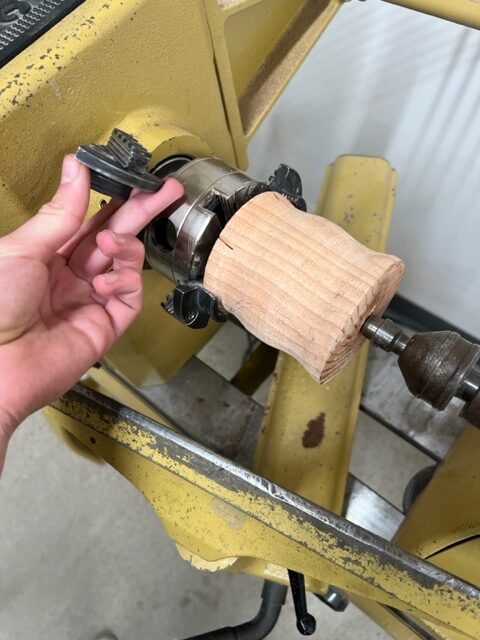
After sanding it down for a while, I was able to fix it again and try lathing again. Finally after sanding it down it did not escape anymore.
At first I was struggling with the lathe as I couldn’t get it to angle right so it wouldn’t randomly chip out a piece of wood and make the structure look uneven. So I changed my blade to a smaller one, till I got used to the angling of the tool. After some time I managed to cut the wood away to make the neck part of the bottle as well as the entrance.

I then drilled into the bottom to make a cavity in the block to make the inside chamber. Then I drilled another hole to the side of the bottle to make a tunnel for the handle. I then did a smaller opening from the top to make the zero volume part of the bottle.
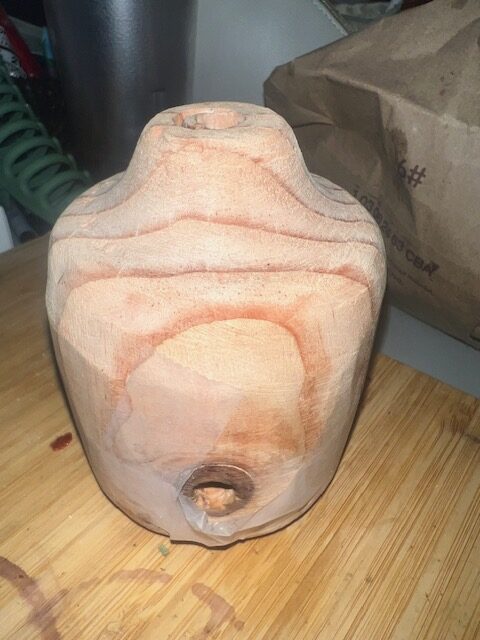
This left me with a final problem which was making the handle of the Klein bottle. After using the lathe, I understood that I was not proficient enough with it to make a small curving hollow structure. I started searching for replacement parts instead. After trying out a few options, such as multiple straws glued together or making a hole in a curved branch, I chose to use a plastic bendable tubing. This helped demonstrate the zero volume property of the Klein bottle.
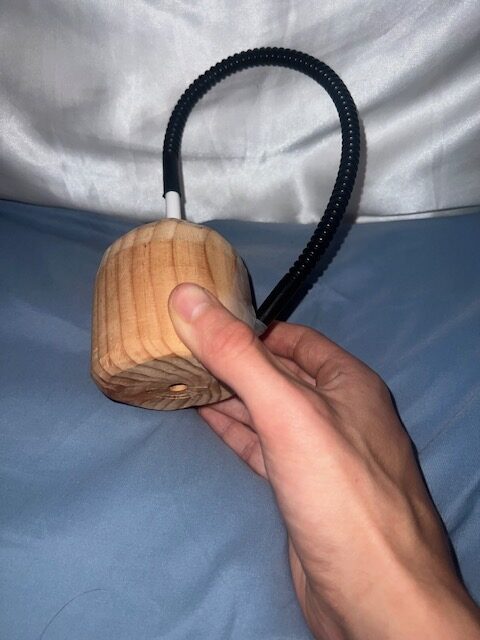
Leave a Reply